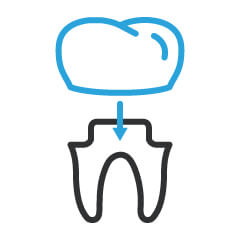Retreatment
Retreatment
Maintaining Tooth Health
Most teeth that have had an endodontic procedure, such as a root canal can last just as long as your natural teeth, as long as they have been properly cared for. There is a 95% success rate for root canals when performed by an endodontist, a root canal specialist. In a small amount of cases, a tooth fails to heal after an endodontic procedure. There are some occasions where a tooth becomes diseased or pain is experienced months, or years after what is thought to be a successful treatment.
Retreatment
Why Do I Need Retreatment?
With any medical or dental procedure, there is always a chance that a tooth may not heal as expected.
This can be for a variety of reasons including:
-
- Curved or narrow canals were not treated initially.
- Complicated canal composition went undetected in the original procedure.
- There was a delay placing the crown or other restoration following the endodontic treatment.
- Salivary contamination to the inside of the tooth was not prevented by the restoration.
- A new problem can endanger a tooth that was successfully treated.
Retreatment
An Example Case
A new infection in the tooth can be caused by decay when the root canal filling material is exposed to bacteria. A broken, cracked or loose crown or filling can expose the tooth to infection. A tooth might sustain a fracture.
Retreatment is usually performed in two visits and would involve the following:
-
- On your first visit the endodontist will examine your tooth, take X-rays and speak with you about treatment options.
- At your retreatment appointment the endodontist will apply a local anesthetic to numb the tooth and the surrounding area. When the tooth is numb, the endodontist will reopen your tooth, so they can access the root canal filling material. In some cases, complex restorative materials (crown, post and core material) must be disassembled and take out to gain access to the root canals.
- Once the canal filling is taken out, the endodontist will clean the canals and examine the inside of your tooth. They will do so with a microscope and check for any additional canals or unusual anatomy that would require treatment.
- After the canals are clean, the endodontist will fill and seal the canals. They will then place a temporary filling in the tooth. Post space may also be prepared at this point.
- Once your endodontist completes retreatment, you will need to return for another visit to have a new crown, or other restoration placed on the tooth. This will protect your tooth and bring back full functionality.
- At times, canals may be unusually narrow or blocked. In this cases, your endodontist might recommended endodontic surgery.
Retreatment
Related Procedures
Crowns
The crown will be placed on your tooth with cement. Once you’re done, you will see that your old smile has returned. Crowns are strong and…
Root Canal
Root canals are perhaps the most infamous procedures in dentistry and the most frequent when relating to endodontics. Should a tooth become…



